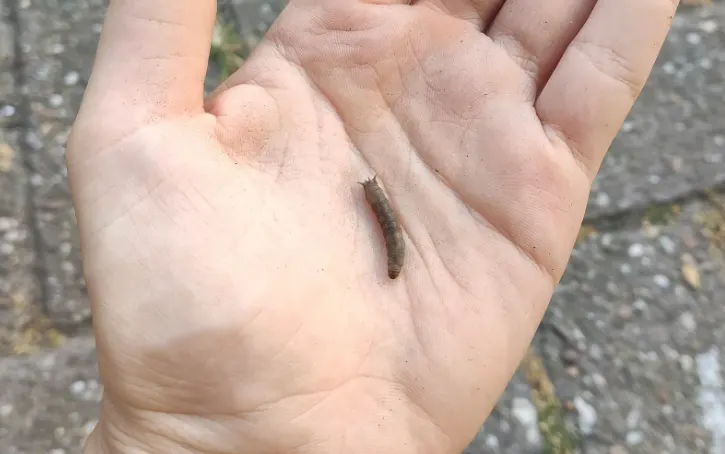Pests and infestations are a frequent problem in interior and project planting. Early detection, effective control, and preventive measures are essential to avoid damage and to minimise the impact on your business. That is why we have designed this guide: to help you quickly identify the most common pests and to give you tips on how to combat them.
Aphids
Identification
There are many different species of aphids. In general, they are small, pear-shaped insects a few millimetres in size, and can be green, black, grey, red, or yellow in colour. They are visible to the naked eye and are often found in groups on the underside of leaves and on young shoots. They frequently leave behind their white cast-off skins, which can be a clear sign of their presence.
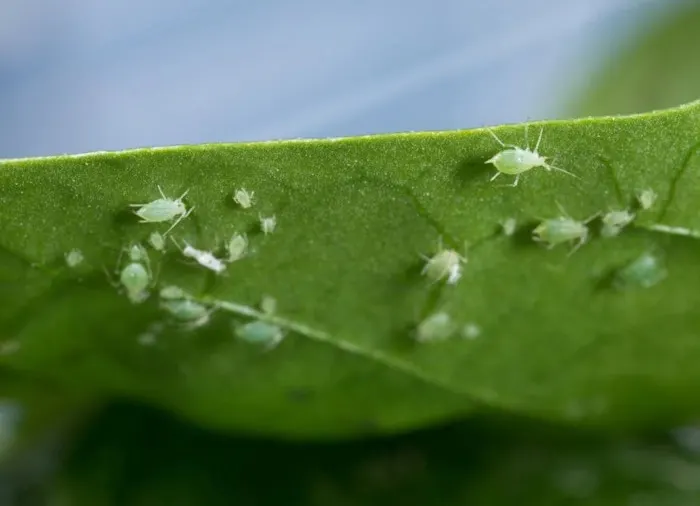
Damage
The different types of aphids cause damage to leaves in various ways:
Honeydew: Aphids excrete honeydew, a sticky substance that attracts mould (sooty mould). Ants are attracted to the sweet substance of honeydew, so the presence of ants may indicate aphids.
Yellow or brown spots on leaves: Aphids suck cell sap from leaves. The affected cells then turn yellow and brown.
Wilted and/or deformed leaves: Due to the extraction of plant sap, leaves may discolour, deform, curl, droop, and shrink.
Rose plants and pot plants with soft leaves, such as Calathea or Alocasia, are particularly susceptible to aphids.
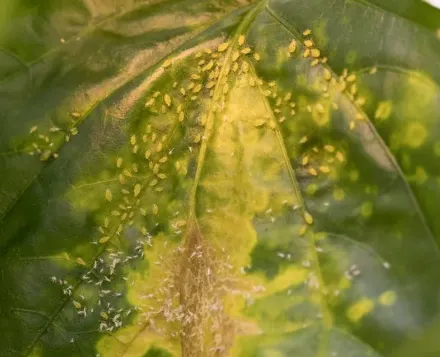
Control
Because aphids reproduce rapidly, it is important to combat them as soon as possible. This can be done in the following ways:
Soft soap solution: Make a solution of soft soap (10 ml per 1 litre of water), optionally with a little methylated spirit, and spray this on the affected leaves. This treatment must be repeated regularly.
Nettle or garlic extracts: Make a spray using nettle infusion (soak nettles in water for 24 hours) or garlic (boil 3 cloves of garlic in one litre of water) and spray affected leaves regularly.
Use of natural enemies: Parasitic wasps, lacewings, and ladybirds can be introduced into the affected plants, where they will feed on the aphids.
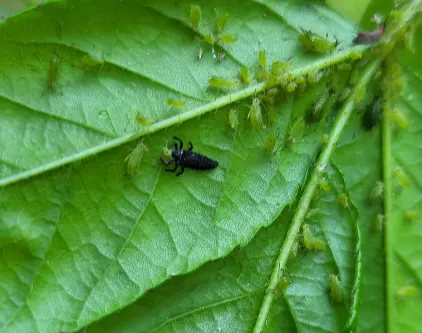
Scale insects
Identification
Scale insects are small insects covered by a hard, oval or round shell, varying in colour from light brown to dark brown. The shell measures 1 to 5 mm and is firmly attached to stems or the underside of leaves. Scale insects are often found in groups along veins or in leaf axils. The presence of sticky honeydew on leaves and stems is often an early sign, as is the development of black sooty mould on the leaf surface.
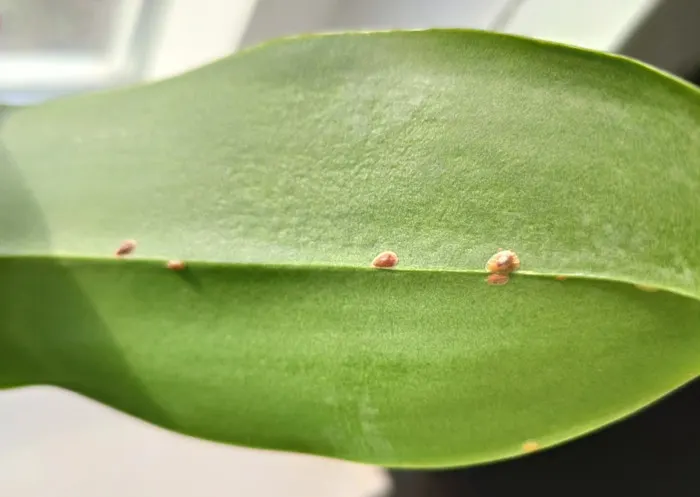
Damage
Scale insects cause visible damage to leaves:
Honeydew and sooty mould: Like aphids, scale insects excrete honeydew. This sticky substance attracts sooty mould fungi, causing leaves to blacken and reducing light absorption.
Yellow or brown spots on leaves: By piercing and sucking out plant cells, yellow to brown spots develop around the area where the insect is attached.
Stunted growth: Due to the damage to leaves and the loss of plant sap, the growth of the plant may stagnate.
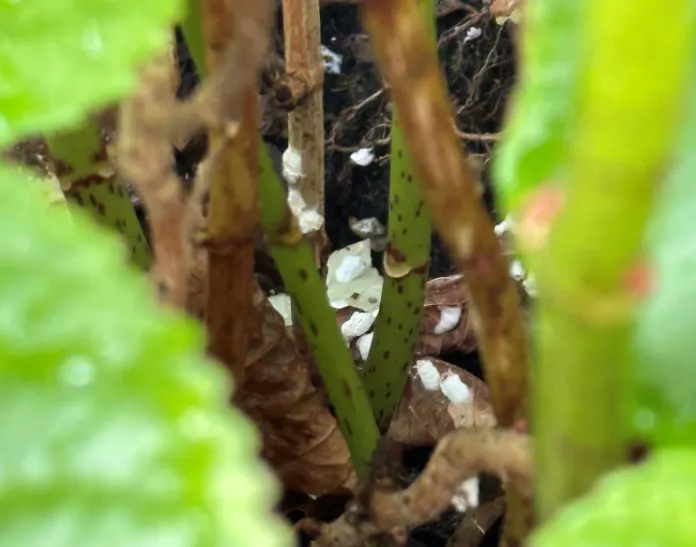
Control
Scale insects are difficult to control because of their protective shell. For an effective, natural approach, follow these steps:
Mechanical removal: Scale insects can be carefully removed from leaves or stems using a cotton swab dipped in biological alcohol (70%) or neem oil. This works particularly well with a light infestation.
Spraying with soft soap: Spray affected areas with a solution of soft soap (10 ml per 1 litre of water) to seal the shell and suffocate the insect. Repeat the treatment several times.
Use of natural enemies: Parasitic wasps (such as Coccophagus) can be introduced. They lay their eggs in or near the scale insect, reducing the population.
Check the plants regularly after treatment for new specimens, as scale insects can hide well and return quickly.
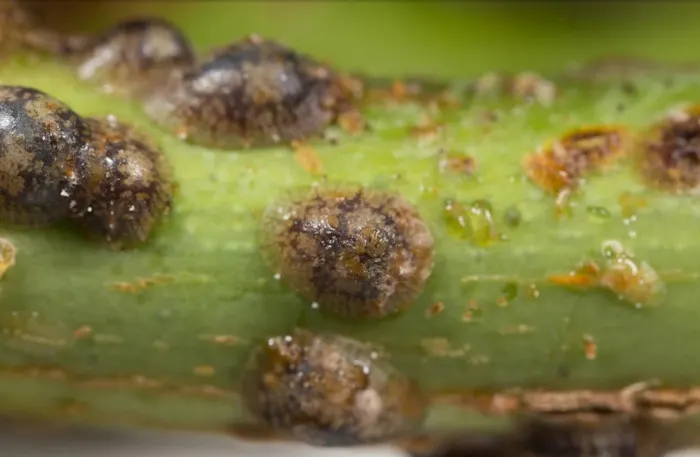
Fungus gnats
Identification
Fungus gnats (Sciaridae), also known as sciarid flies, are small black flies measuring 2 to 4 mm. They resemble miniature fruit flies. The adult gnats usually fly up from the potting soil when the pot plant is moved or watered. The larvae are translucent white with a black head and are mostly found in the top few centimetres of the soil.
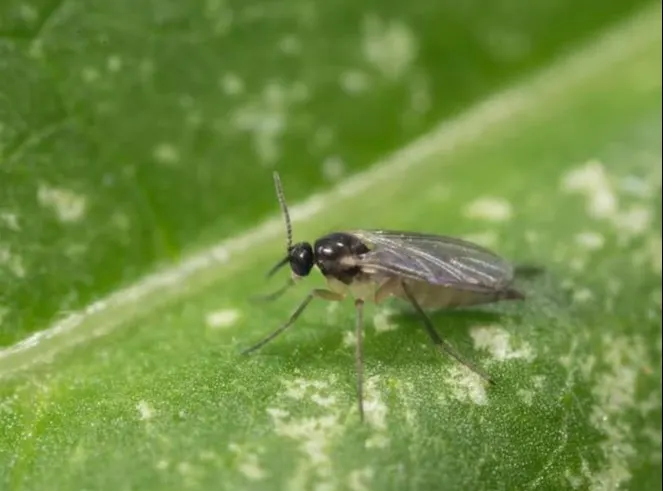
Damage
Fungus gnats are relatively harmless; only the larvae can cause damage:
Yellow or wilted leaves: Larvae feed on organic matter and fine root hairs. This can damage the roots, resulting in yellowing or wilting leaves.
Stunted growth: Root system damage can slow down plant growth and may eventually lead to the death of the plant.
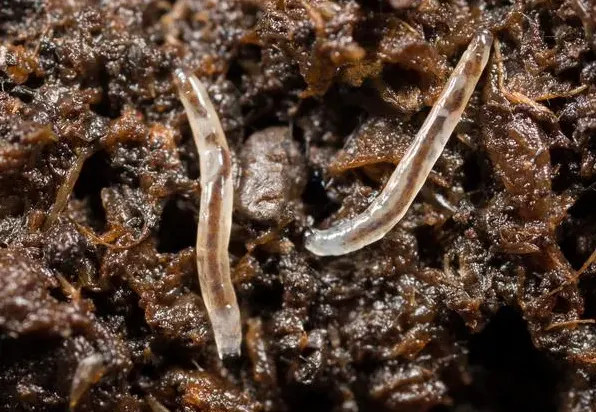
Control
Fungus gnats can be controlled relatively easily and effectively:
Top layer of sand or cinnamon powder: Sprinkle a thin layer of sand or cinnamon powder on the potting soil.
Reduce watering: Fungus gnats thrive in moist environments. Allow the potting soil to dry out more between waterings.
Yellow sticky traps: Place yellow sticky traps around the plants to catch adult gnats and reduce the population.
Nematodes (Steinernema feltiae): Apply beneficial nematodes to the potting soil. These parasitise the larvae, effectively controlling the infestation.
Regular monitoring and quick action are important, as fungus gnats can reproduce quickly in moist environments.
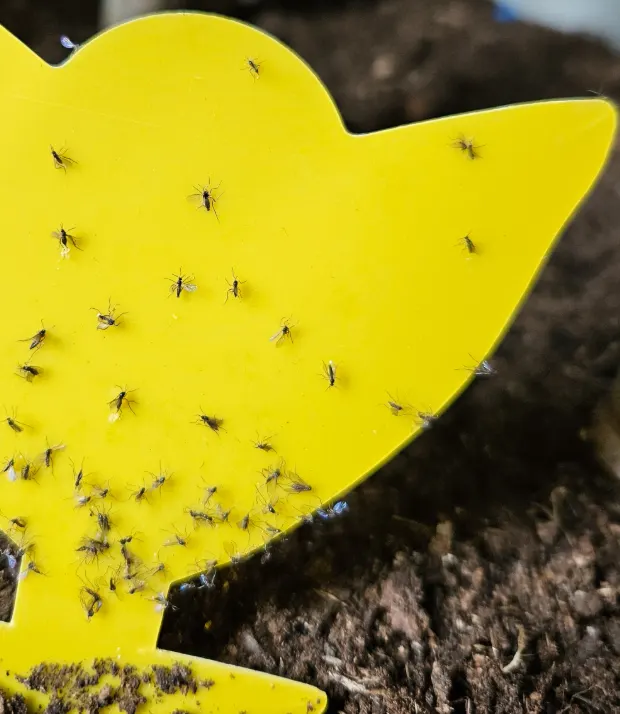
Spider mites
Identification
Spider mites (Tetranychidae), often simply referred to as spider mites, are very small, spider-like insects about 0.5 mm in size. They are difficult to see with the naked eye, but under a magnifying glass they can be recognised as yellow-green, brown, or red dots on the underside of leaves. Spider mites occur mainly in dry, warm conditions, such as during summer periods. A clear sign of a spider mite infestation is the presence of fine webs appearing between leaves, leaf axils, or along veins.
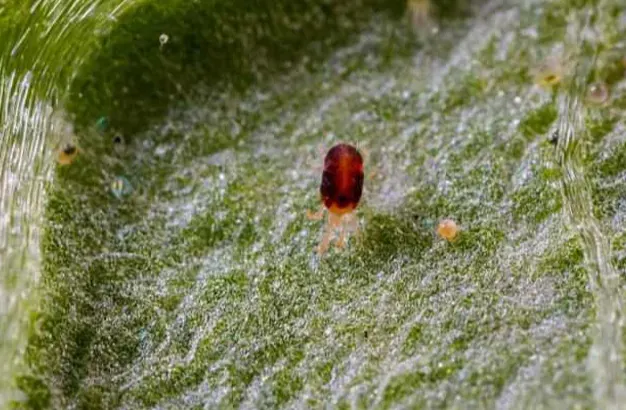
Damage
Spider mites suck cell sap from leaves, which causes the following visible damage:
Small, light spots: Their feeding causes countless small yellow-white dots on the leaf surface.
Yellow, grey, or brown discolouration: In heavy infestations, larger parts of the leaf may turn yellow, grey, or brown.
Leaf drop: In severe cases, leaves may wilt prematurely and fall off.
Webbing: In advanced stages, fine webs become visible, particularly on the underside of leaves and in leaf axils.
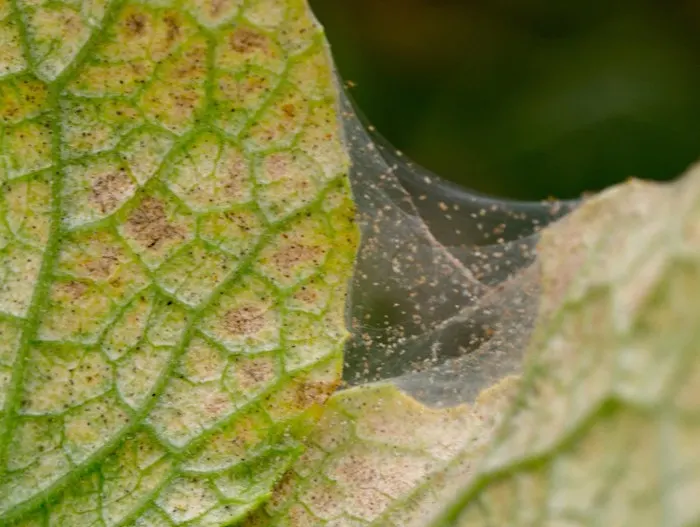
Control
Spider mites reproduce quickly in dry conditions. Effective, natural control consists of several steps:
Isolate the affected plant to prevent further spread.
Increase humidity: Spider mites do not thrive in high humidity, so mist plants regularly with water or place a humidifier in the room.
Rinse leaves and stems: Thoroughly rinse affected leaves and stems with water to remove mites and eggs. Repeat weekly.
Plant extracts: Spray plants regularly with a solution of soft soap or diluted garlic or nettle extract. These substances disturb the habitat of spider mites.
Natural enemies: Release predatory mites (e.g. Phytoseiulus persimilis or Amblyseius californicus). These natural enemies actively hunt spider mites and can effectively suppress the infestation.
Check the plants weekly after treatment, as spider mites can quickly re-establish themselves under recurring dry conditions.
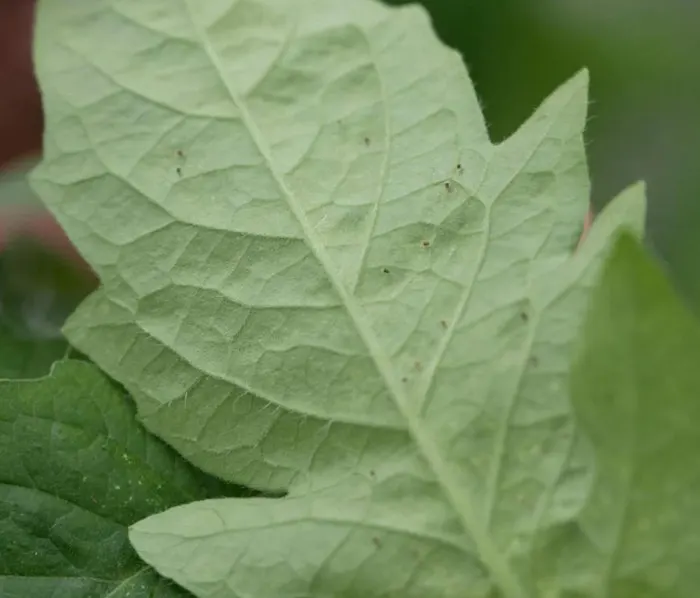
Thrips
Identification
Thrips (Thysanoptera) are elongated insects measuring 1 to 2 mm, usually brown, black, or yellow. They move quickly and are often found in leaf axils or on the underside of leaves. Thrips are especially active in summer during warm and dry weather. A distinctive sign of thrips is the presence of silvery streaks or spots on the leaf surface, caused by their rasping-sucking feeding behaviour.
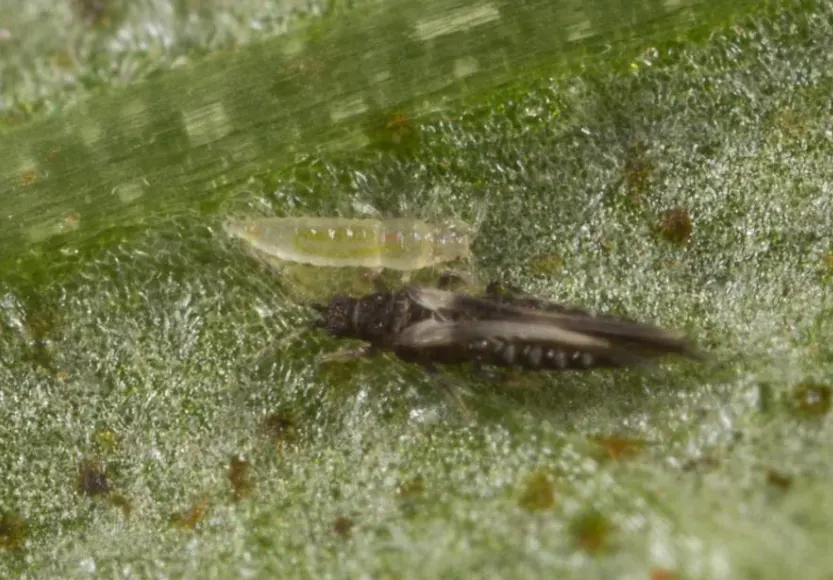
Damage
Thrips cause clearly visible damage to leaves by sucking out plant cells:
Silvery streaks and spots: The dead, empty plant cells appear silvery or brown. This damage is first visible on the underside of the leaf; in heavier infestations, the upper side is also affected.
Small black dots on leaves are typical thrips droppings.
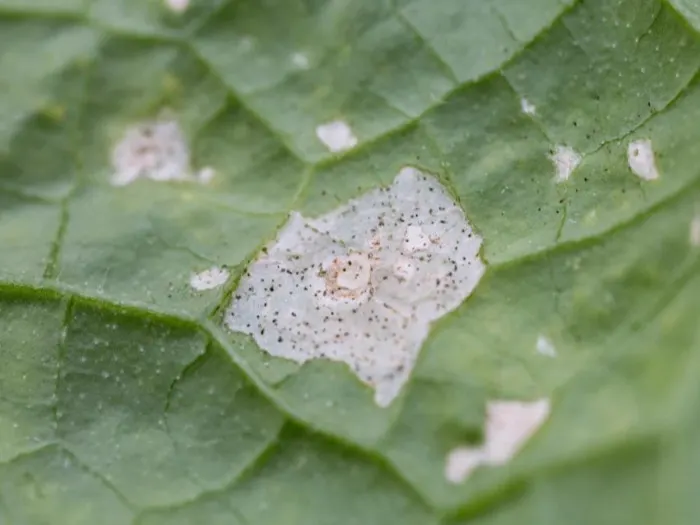
Control
Thrips are difficult to control because they reproduce quickly. For effective control, address all life stages of thrips with a combination of methods:
Isolate infested plants and remove heavily damaged leaves.
Place sticky traps among the plants to catch adult thrips and monitor the population.
Regularly spray affected plants with a solution of soft soap (10 ml per 1 litre of water) or diluted neem oil. Ensure both upper and lower leaf surfaces are treated thoroughly. Repeat weekly if possible.
Natural enemies: For larger infestations, natural predators can be used, such as lacewing larvae (Chrysoperla carnea), which eat larvae and adult thrips. Predatory mites (Amblyseius swirskii) can be introduced to combat thrips larvae.
Choose a combined approach using different measures and methods to control the infestation as quickly and effectively as possible.
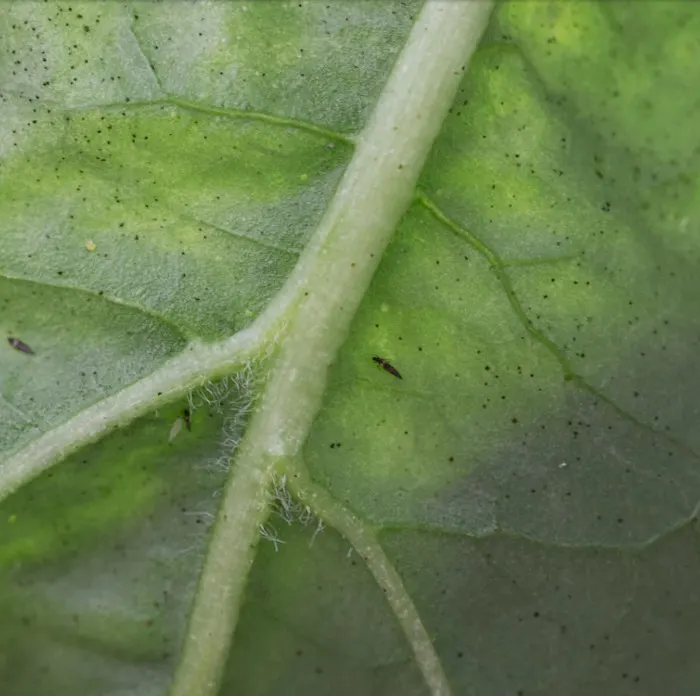
Whiteflies
Identification
Whiteflies (Trialeurodes vaporariorum and Bemisia tabaci) are small, white, moth-like insects about 1 to 3 mm in size. They are usually found in large numbers on the underside of leaves. When the plant is touched, they fly up in swarms. In addition to the adult whiteflies, you will often find their oval, whitish-yellow eggs and immature stages (nymphs) as small, scale-like spots on the underside of leaves.
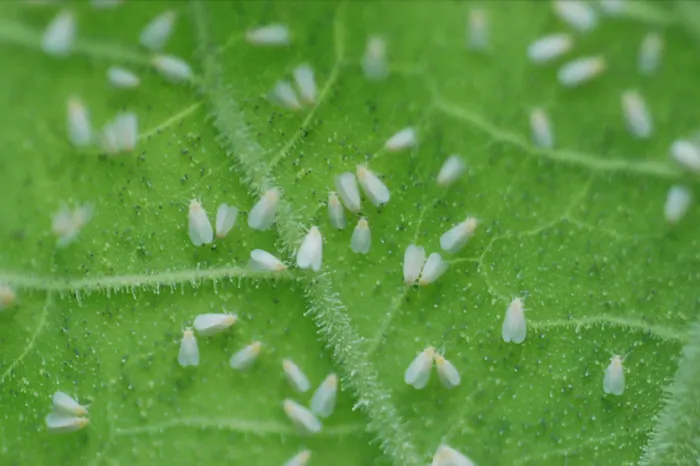
Damage
Whiteflies cause various types of visible leaf damage:
Yellow spots or leaf yellowing: Feeding causes yellow spots and gradual yellowing of the leaf.
Leaf curl and leaf drop: Leaves may curl, wilt, or fall off prematurely in the case of severe infestation.
Whiteflies excrete honeydew, making leaves sticky and encouraging the growth of mould (sooty mould).
Severe infestations can slow growth and weaken the plant.
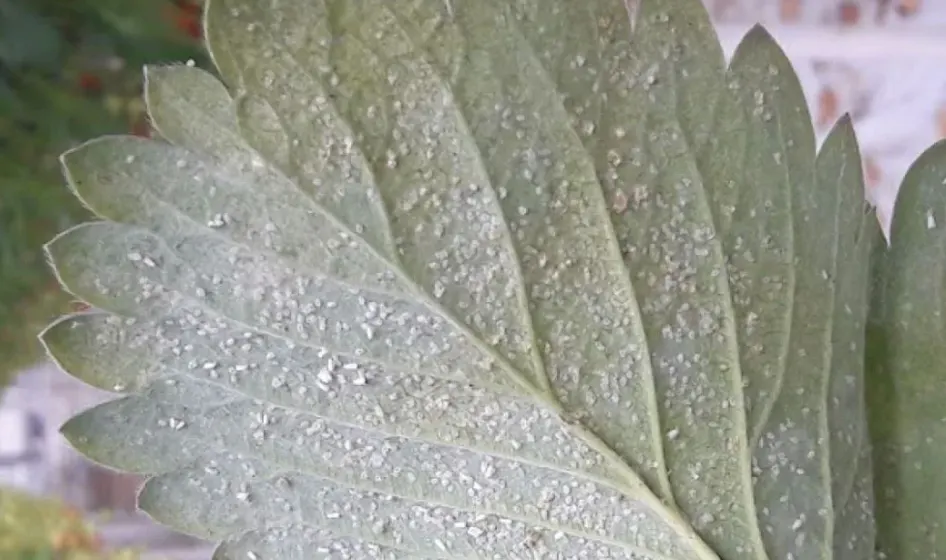
Control
Successful, natural control of whitefly requires a combined approach:
Remove affected leaves to prevent further spread.
Spray plants with a solution of soft soap or vinegar, focusing especially on the undersides of leaves. Repeat weekly.
Place yellow sticky traps among plants to catch adult whiteflies and monitor the infestation.
Natural enemies: Introduce parasitic wasps (Encarsia formosa) or predatory bugs. These predators are effective against eggs and nymphs of whitefly.
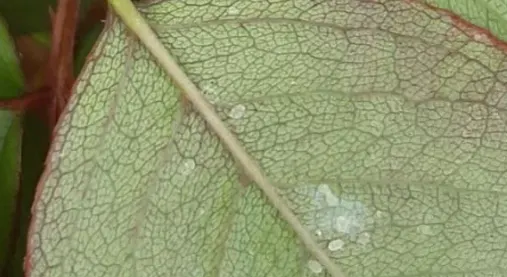
Mealybugs
Identification
Mealybugs (Pseudococcidae) are small, oval insects measuring 2 to 5 mm. They are covered with a white, waxy, cotton-like substance, making them look like small tufts of cotton wool. They are often found in groups in leaf axils, on stems, under leaves, and sometimes even on the roots. Thanks to their woolly protective layer, they are easy to recognise and relatively easy to spot with the naked eye.
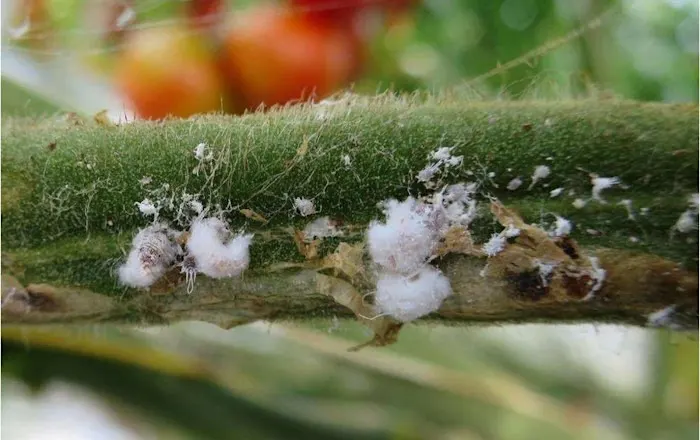
Damage
Mealybugs cause the following visible damage to leaves:
White, cotton-like patches: Where mealybugs cluster, visible white, woolly spots appear.
Yellow or wilted leaves: By sucking sap from leaves and stems, yellow spots develop, and leaves may droop or wilt.
Severe infestations can lead to early leaf fall and hindered growth.
Mealybugs excrete honeydew, causing leaves to become sticky and promoting sooty mould.
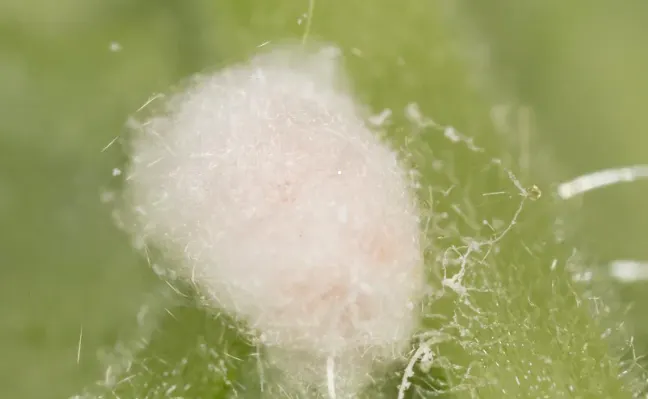
Control
Mealybugs are difficult to control because of their protective wax layer, but natural methods can be effective:
Mechanical removal: Mealybugs can be carefully removed with a cotton pad or brush dipped in biological alcohol (70%) or neem oil. Repeat regularly with light infestations.
Spray affected leaves and stems with a solution of soft soap (10 ml per 1 litre of water) or diluted neem oil. Repeat the treatment weekly.
Natural enemies: Introduce predatory beetles (Cryptolaemus montrouzieri), which feed on mealybugs in all life stages.
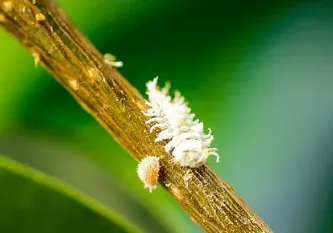
Vine weevil
Recognising
The vine weevil is a beetle whose larvae are particularly harmful to plants. The adult beetle is dark brown to black, about 1 cm long, and has a distinctive grooved back. It usually appears at night to feed on leaves. The larvae are white with a brown head, legless, and can grow up to 1.5 cm long. They live mainly in the soil, where they feed on plant roots.
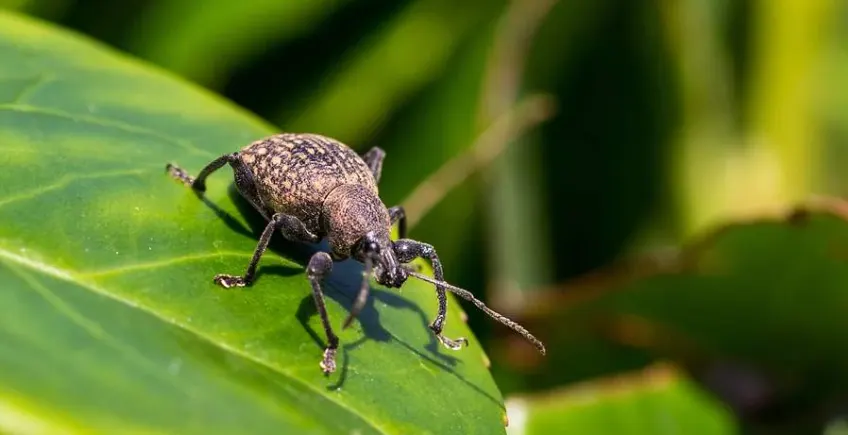
Damage
Vine weevils can cause several types of damage:
Leaf damage: Adult beetles feed on the edges of leaves at night, leaving typical semicircular notches.
Root damage by larvae: The larvae feed on plant roots, which can cause severe harm. Affected plants grow poorly, wilt, or even die. This often happens unnoticed, as the larvae are active underground.
Plants such as yew (Taxus), rhododendron, hydrangea, and strawberry are particularly susceptible to vine weevil damage.
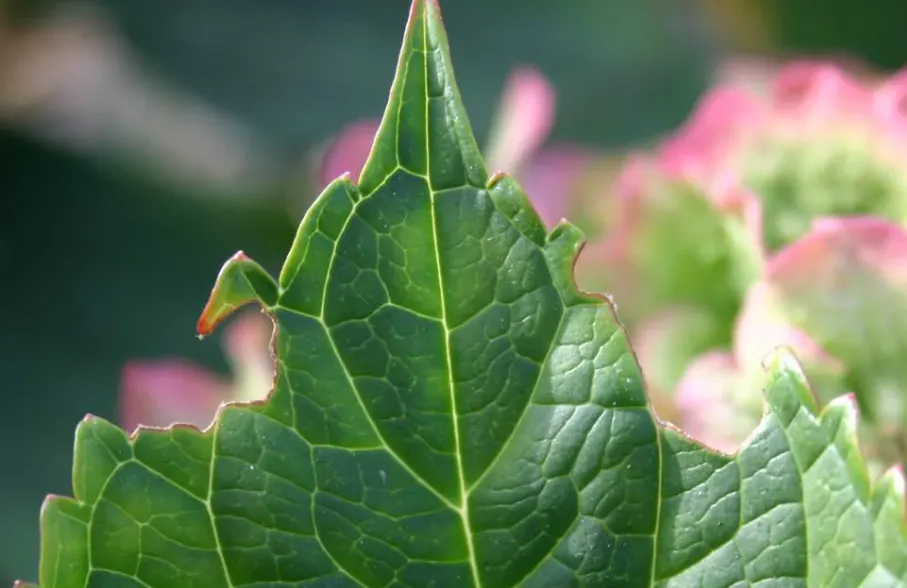
Control
Because the larvae live underground, targeted measures are important:
Nematodes: Use natural enemies such as nematodes of the Steinernema kraussei or Heterorhabditis bacteriophora type. These microscopic worms penetrate the larvae and kill them. Apply them with water to moist soil, preferably in spring and/or autumn.
Natural predators: Ground beetles and birds such as blackbirds help control adult beetles.
Manual removal: Check for adult beetles at night using a torch and collect them by hand.
Traps: Place small boards or upside-down pots near the plants; beetles hide underneath during the day and can then be collected and removed.
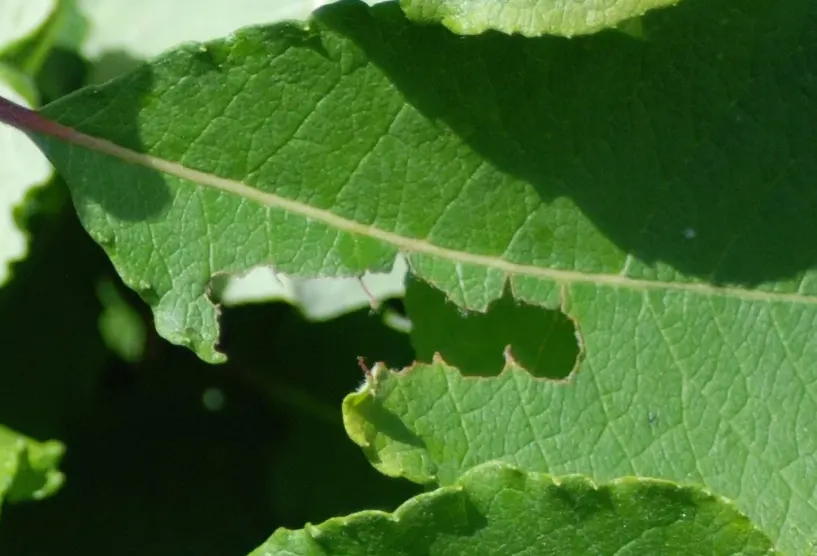
Box tree moth
Recognising
The box tree moth (Cydalima perspectalis) is an invasive moth species that primarily attacks boxwood plants. The adult moth has white wings with a dark brown border or can be entirely brown. They are active mainly from May to October. The caterpillars are light green with black stripes and dots and can grow up to 4 cm long. They are often found among webbing and frass inside boxwood bushes.
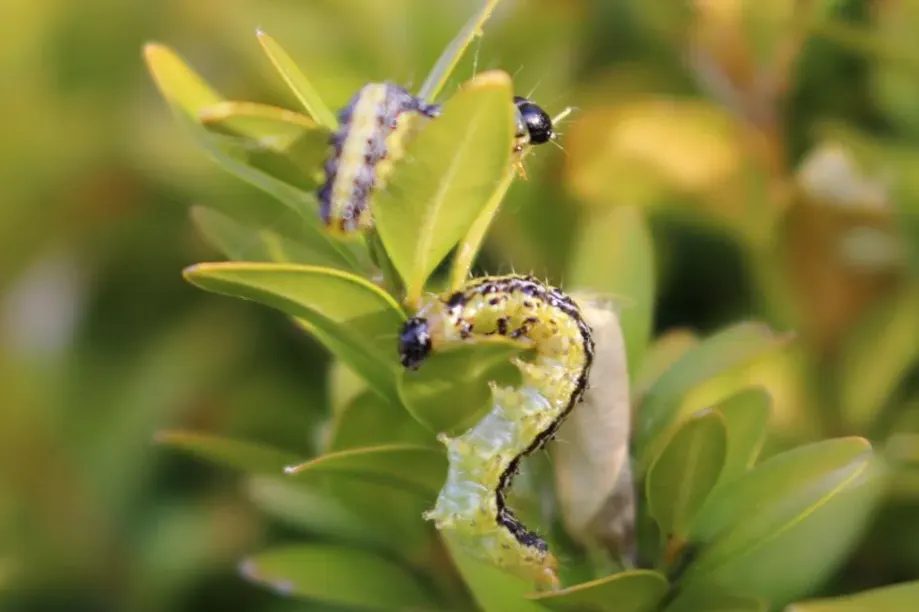
Damage
The box tree moth can cause severe damage in a short period of time:
Leaf damage: The caterpillars eat large parts of the boxwood leaves, often leaving the plant completely defoliated.
Webbing: Dense webbing appears within the plant, containing caterpillars and droppings.
Plant decline: Severe infestations can result in dried-out, bare shrubs that may not recover without intervention.
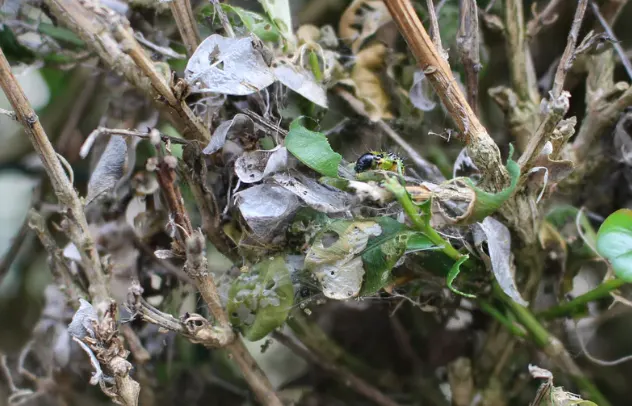
Control
Manual removal: Remove caterpillars, webbing, and droppings by hand, and prune heavily infested branches.
Biological control: Apply biological agents such as Bacillus thuringiensis, a naturally occurring bacterium that infects and kills the caterpillars.
Pheromone traps: Hang traps to monitor and reduce the adult moth population.
Prevention: Regularly inspect boxwood plants from May to September for early signs of infestation.
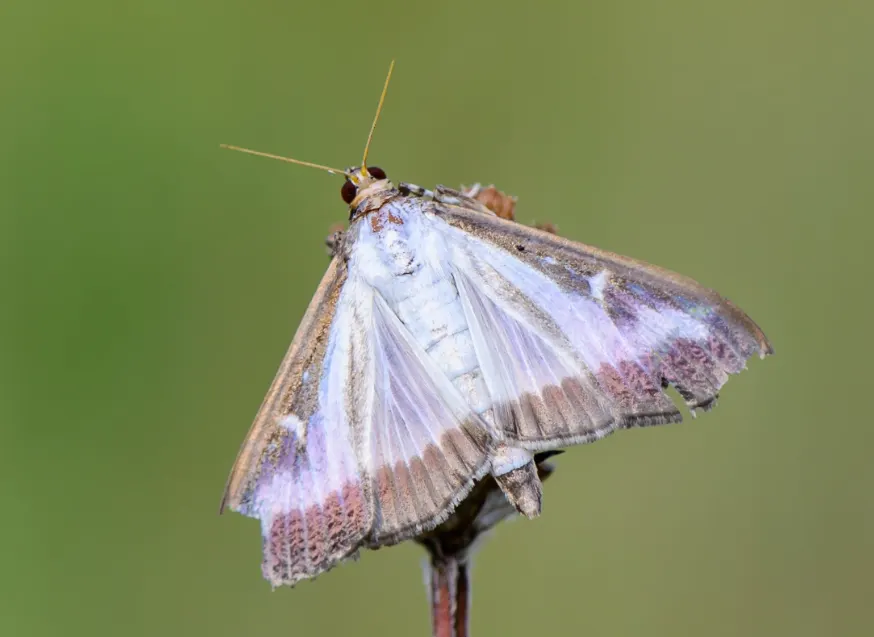
Elaeagnus psyllid
Recognising
The Elaeagnus psyllid (Cacopsylla spp.) is a small, jumping insect that resembles a miniature cicada. Adults are usually yellow-green to brown and about 3 mm long. They are mainly found on oleaster (Elaeagnus) plants.
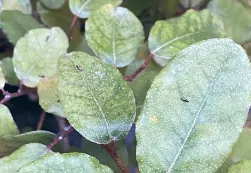
Damage
Leaf curling and galling: The psyllid feeds by sucking sap from the leaves, causing them to curl, deform, and sometimes thicken.
Sticky honeydew: Like aphids, psyllids excrete honeydew, a sticky substance that attracts black sooty mould.
Weakened growth: Heavy infestations reduce plant vigour and ornamental value.
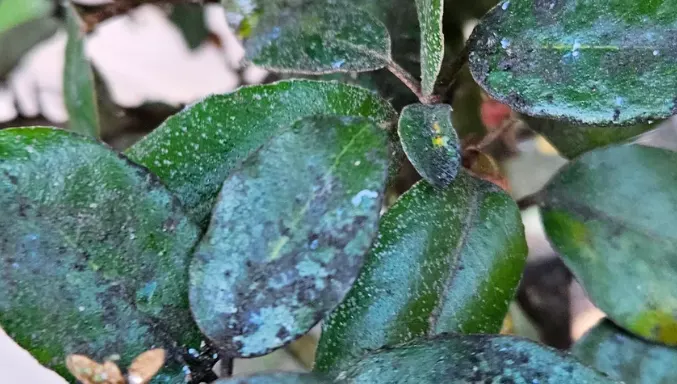
Control
Pruning and removal: Cut off and remove deformed or infested leaves to prevent further spread.
Green soap solution: Regularly spray the underside of the leaves with a mixture of soft soap and water (optionally with a little methylated spirit).
Natural predators: Ladybirds and lacewings are natural enemies that help reduce psyllid populations.
Preventive monitoring: Check plants regularly in spring and during warm, dry weather.
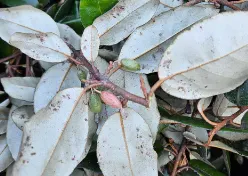
Leatherjackets
Recognising
Leatherjackets are the larvae of crane flies. They are grey-brown, legless, and can grow up to 4 cm long. They live in the upper layer of the soil and are mainly active from autumn to spring. The adult crane flies are often seen flying in large numbers in late summer or autumn.
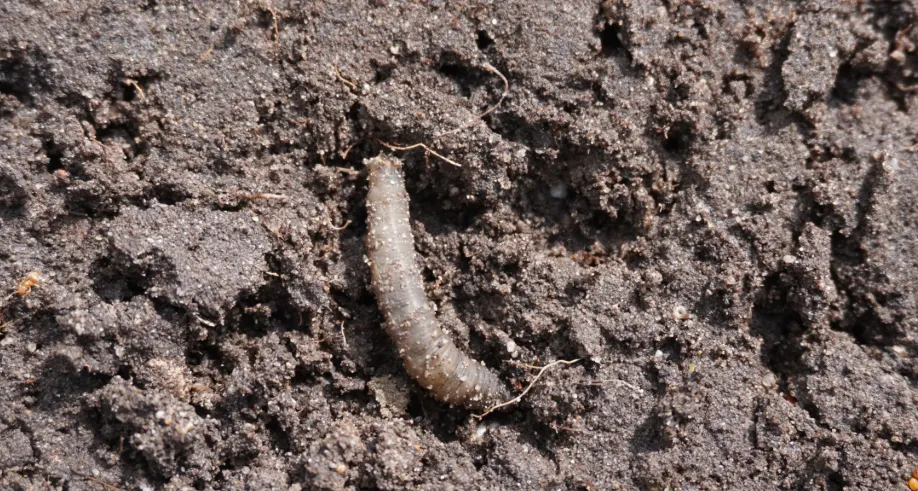
Damage
Root damage: Leatherjackets feed on the roots of grass and other plants, causing yellowing and wilting patches in lawns or beds.
Loose turf: Damaged roots cause the turf to loosen and die off in patches.
Bird activity: Birds such as crows and blackbirds may peck at the lawn to find the larvae, resulting in additional damage.
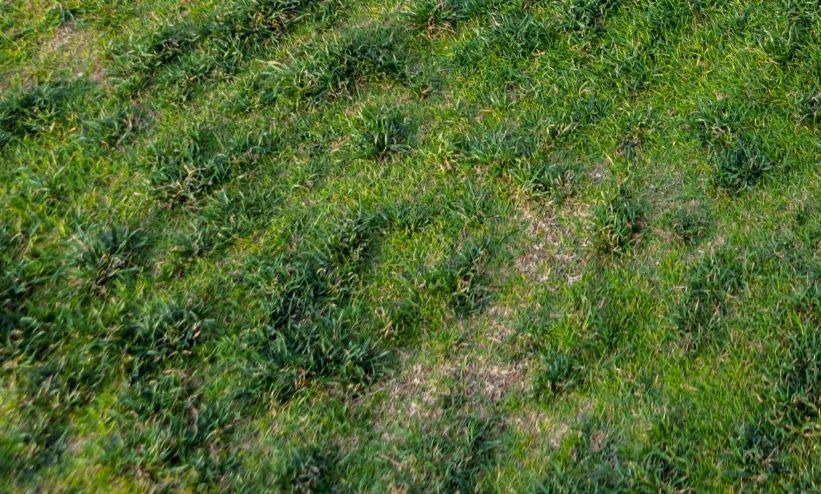
Control
Nematodes: Apply Steinernema feltiae nematodes, preferably in late summer or early autumn. These natural organisms parasitise the larvae and stop the infestation effectively.
Aerate the lawn: Aerating the soil makes it less attractive for egg laying and larval development.
Discourage birds: Use nets or fine threads to prevent birds from digging up the turf.
Prevention: Maintain a healthy and dense lawn to reduce the risk of crane flies laying eggs.
